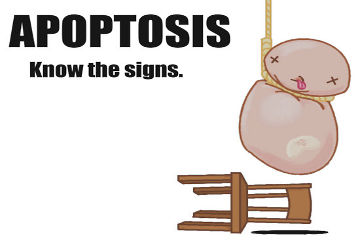What I’ve Learned:
“Glycosaminoglycans: you’ll take two sugars, and like it.”
Some words in science just sound completely made up — like “glycosaminoglycans”, for instance. That sounds like something you get when your cat walks across the keyboard, not something your body makes so you can bend and heal and see.
And yet. That’s what glycosaminoglycans do, apparently. So… thanks, kitty, I guess?
As for what glycosaminoglycans are, it’s actually all right there in the gibberish-looking name. You just have to break it down into parts to make sense of it. The prefix for “sugar” in biochemical speak is “glyco-“.
(I assume this is because sugars of various kinds come up a lot in biochemistry, and the scientists don’t want to be yelling “sugar” back and forth in the lab at each other, lest their significant others hear about it and get jealous.)
(Of course, I’m kidding about the reason. That’s obviously not how it works.
I’m not even sure biochemists have significant others. Just for starters.)
So if you take the last part of the word, “aminoglycan”, that describes something called an “amino sugar”, which is… I don’t know, a sugar that drinks those amino acid shakes, maybe? Could be it’s a bodybuilding sugar. Or it’s beefing up for sugar swimsuit season. Search me.
Anyway, stick this “amino sugar” with the “glyco-” — that is, a second sugar — from the beginning of the word, and you’ve got two sugars glommed together in one molecule. That’s what scientists call a “disaccharide” — “di-” for “two”, and “saccharide” for “hey, screw you people learning about science; we can have as many damned words for ‘sugar’ as we feel like, so nyah“.
(Biochemists are really petty, vindictive people sometimes. Maybe it’s all the significant others they don’t have.)
So, that’s what glycosaminoglycans are — long chains of two sugars latched together, and then repeated over and over. Our bodies make all different sorts of them, mixing and matching sugars and chain lengths in a process much more willy-nilly than most things our cells synthesize. DNA, RNA and proteins, for example, follow very strict recipes; glycosaminoglycans are pretty much thrown together from whatever happens to be in the pantry at the time. Glycosaminoglycan production is definitely less “paint by numbers”, and more “happy little trees all over”.
Also, now that we’ve sweated the glycosaminoglycan term for all it’s information, I’m going to stop typing it. I’m starting to get carpal tunnel on top of the carpal tunnel I developed three paragraphs ago. Instead, I’ll use the common abbreviation: GAG.
(Which also happens to be the sound you make if you try to say glycosaminoglycans three times fast. The more you know.)
So what are these GAGs good for, anyway?
First off, because of their long structure and chemical polarity, GAGs are great at sucking up water. So anywhere the body needs hydration, GAGs often come to the rescue, carrying water with them. This includes inside our corneas, where keratan sulfates keep us seeing sharp, and in the fluid in our joints, which are lovingly lubed by other GAGs called hyaluronic acids.
That fluid hauled around by GAGs can come in handy in other ways, too. Another type, heparin, can prevent blood from clotting. And those keratan sulfates, when they’re not watering up the insides of our eyes, keep cells and other structures from sticking together by forming a slippery, squishy preventative layer between.
If you’ve ever tried to have sex with someone with a dog in the room, you know exactly how this works.
But like the morning of a really bad hangover, the GAGs aren’t done yet. They also play roles in blood vessel growth, brain development, regulating cell division, cell surface binding, collagen stabilization and many other processes.
So glycosaminoglycans may be a tongue twister. But when it comes to all the ways our bodies need GAGs, that’s the real mouthful.







